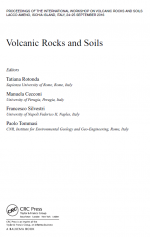Добрый день, Коллеги. Важное сообщение, просьба принять участие. Музей Ферсмана ищет помощь для реставрационных работ в помещении. Подробности по ссылке
Volcanic rocks and soils
Sensitive soils in the Bay of Plenty in North Island occur within weathered, rhyolitic pyroclastic and volcaniclastic deposits, with hydrated halloysite (not allophane) as the principal clay mineral.We evaluate the development of sensitivity and characteristic geomechnical behaviours for sequences of the silt-rich, halloysitic soils. Morphologically the halloysite comprises short tubes, spheroids, plates, and, uniquely, books. Key findings include (i) the varied morphologies of halloysite minerals within the microstructure create an open network with small pores and predominantly point contacts between clay particles; (ii) low plasticity, high natural water contents, low cohesion, low CPT tip resistance, and low permeability are attributable to the dominance of halloysite; (iii) boundary effects between pyroclastic units amplify Earth tide effects; and (iv) large spikes in pore water pressures follow rainfall events. The regular deposition since c. 0.93 Ma of siliceous pyroclastic deposits from ongoing explosive rhyolitic volcanism in TVZ, together with high natural water content and low permeability, have created a locally wet environment in the stratigraphic sequences that generates Si-enriched pore water from the weathering mainly of rhyolitic volcanic glass shards and plagioclase, providing conditions suitable for halloysite formation. Initial hydrolysis of glass shards also releases cations that promote cohesion between clay minerals. Eventual enleaching of these cations reduces cohesion between clay minerals, resulting in sensitive behavior




